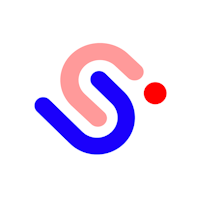While interactive eBooks are much more dynamic, engaging, and trackable than PDF eBooks, they require a somewhat different approach when it comes to execution. At Ceros, we see a lot of content marketers using the same approach they follow when creating static content on their Ceros projects. This approach usually results in an interactive eBook that doesn’t fully take advantage of the platform’s capabilities.
Given the power of interactivity to bring stories to life, your interactive eBooks built in Ceros should be considerably more engaging, effective, and awesome than any traditional PDF. Below are 5 common pitfalls to avoid when you’re developing content for interactive eBooks.
Tip 1: Don't Get Sucked into PDF Mode
At their core, PDFs are essentially a way to portprint content such as books, magazines, or brochures into the digital realm. This made sense in 1993: Web-based content was still relatively new, and technology had flaws and limitations that PDFs circumvented. But we’ve had 23 years since then to figure out better ways to create digital content. And that means it’s time to let go of the PDF security blanket and embrace the brave new interactive world.
A traditional eBook usually looks like a textbook chapter: It’s got an introduction, a list of sections, and a lot of text that follows a linear progression of concepts designed to be read in order. There’s usually some kind of summary conclusion at the end. This structure has worked with print for years. But it’s not a structure that translates well to the web.
Think of Ceros as a blank canvas. The only limit to what you can create in our Studio is your imagination. So take what you’ve learned about storytelling and forget what you’ve learned about print. Think about how you can tell stories using images, videos, audio, and animations. You’ll likely follow a similar structure to that of a traditional eBook, but the content within each section should feel a lot different.
Tip 2: Don’t Write Tons of Copy
Unless a customer or prospect is reading a book on an eReader, theyre unlikely to read pages and pages of text online. Luckily, an interactive eBook can convey a rich, valuable story without needing 5000 words of copy. Using videos, images, GIFs, animations, and layers of information, you can fully convey your story without relying on tons of copy to deliver the narrative.
On average, the interactive eBooks we’ve written at Ceros have been about 600-800 words shorter than the blog posts we publish. The length of your content will largely depend on your topic, industry, audience, and creative concept, but shorter is generally better.
The way we approach authoring an interactive eBook is as follows:
Topic: We choose topics based on a challenges or interests our audience cares about.
Theme: We pick a creative theme to wrap our content in. This isn’t always necessary, but it can help you get a feel for the visual and writing style of the piece.
Outline: We draft an outline of key points we want to cover in the piece. These can serve as sections or pages in your final piece. You can design these points to follow a linear progression or a more flexible flow that gives the end user control over their content consumption pathway.
Write: Once we’ve got a solid outline to work with, we flesh out each point with supporting text and ideas for graphics and videos. If we have something specific in mind, we’ll curate visual content from third-party sources; often times, we’ll work with our creative team to source or create visuals from scratch. We always try to keep text blocks short so our creative team has flexibility in how they visualize the content.
Tip 3: Don’t Leave Visuals for Last
When creating a static eBook, the content creation process generally goes like this:
You write your content.
You pass it off to design.
They make it pretty and source some graphics.
You review and veto anything you don’t like.
They finalize graphics and export your PDF.
When designing interactive content in Ceros, this process doesn’t work because the graphics and design are integral to the story you’re telling. Instead, the process looks like this:
You brainstorm with your creative team on a visual concept based on your topic.
You give your creative team an outline of your written content. This may include some super short bullet points under each section header to give them an idea of what the details will be.
Your designer will start to research visuals and wireframe a design.
Youll work together to pair visuals, audio, and copy in a way that most effectively tells your story.
When everyone is happy with the end result, you publish the content.
You may come up with a slightly different process depending on how your team is organized and whether your designer is in-house or external. The point is that visuals can no longer be an afterthought in your eBooksthey should be carefully considered along with your written text. In many ways, writing an info-graphic is closer to writing a screenplay or graphic novel than a traditional long-form content piece.
Tip 4: Don’t Force a Linear Narrative
The typical eBook is designed to be read in a linear fashion. Sure, there’s usually a table of contents at the beginning that readers can use to skip ahead, but in a PDF, this often feels like breaking the rules.
An interactive eBook doesn’t require a linear narrative unless your narrative needs it for knowledge-building reasons. As long as you provide clear navigation and content that works well as standalone pieces, your viewers can explore in whatever order and depth they want to.
A few things you can do to facilitate a more fluid exploration of content include:
Creating a persistent nav menu. This makes it easy for viewers to get back to a list of options whenever they like.
Giving clear visual cues for how to drill deeper into the content. Some of the devices we use include plus symbols, animated markers, and text-based calls-to-action (e.g. click here to learn more).
Designing each section as a contained unit. Otherwise, viewers will be really confused when you start referencing content they haven’t encountered yet.
Tip 5: Don’t Forget a Call-to-Action
Like any good content piece, your interactive eBook should leave your audience wondering, “So where should I go next?” Providing a clear call-to-action will help guide your viewers in their journey.
The type of CTA you use depends largely on the which stage of the marketing funnel your content targets:
If your eBook is a top-of-funnel piece, you’ll likely want to recommend another content piece or your blog as the next stop.
If you’re creating mid-funnel content, you may want to direct readers to explore your website or request a demo.
If you’re creating bottom-funnel content, you’ll want to direct people to a case study or buyer’s guide that will solidify their purchase decision.
The placement of your CTA is entirely up to you. At Ceros, we’ve used persistent CTAs as part of a footer or header element, CTAs that appear in their own section at the end, and pop-up CTAs that appear after a certain amount of time spent on the piece.
It’s worth testing different formats to see which works best in a given asset. The good news is that with interactive content, it’s much easier to perform these types of tests than it would be with a static PDF. You’ll gain more insight into how people are engaging with your content, and be able to update your asset based on performance data a lot more easily.







